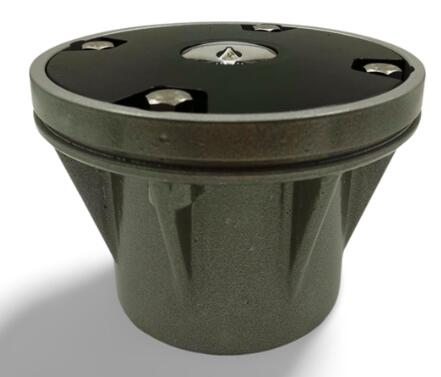The Luminous Evolution of TLOF Lights
In the realm of modern technology and design, few innovations have seamlessly blended functionality with aesthetic appeal as effectively as TLOF lights. These lighting solutions represent a significant leap forward, not merely as sources of illumination but as integral components of contemporary living and working environments. Their development mirrors broader trends in energy efficiency, smart technology integration, and human-centric design, making them a fascinating subject for exploration.
TLOF lights, an acronym often associated with advanced lighting systems, stand at the intersection of innovation and practicality. Unlike conventional lighting, which primarily focuses on brightness and energy consumption, TLOF lights incorporate a holistic approach. They are engineered to enhance visual comfort, reduce environmental impact, and adapt dynamically to user needs. This multifaceted nature distinguishes them in a crowded marketplace, offering users a superior experience that transcends traditional expectations.

One of the most compelling aspects of TLOF lights is their emphasis on human-centric design. Research in photobiology has revealed that light does more than just enable vision; it influences circadian rhythms, mood, and overall well-being. TLOF lights leverage this knowledge by providing tunable white light and color temperatures that mimic natural daylight patterns. For instance, during morning hours, the lights can emit cooler, brighter tones to promote alertness, while warmer, softer hues in the evening encourage relaxation and prepare the body for sleep. This biological alignment is particularly valuable in settings like offices, schools, and healthcare facilities, where optimal lighting can boost productivity, learning, and recovery.
| tlof lights |
Moreover, TLOF lights are at the forefront of the sustainability movement. With global attention increasingly focused on reducing carbon footprints, these lights incorporate energy-efficient technologies such as LEDs, which consume significantly less power than incandescent or fluorescent alternatives. Additionally, many TLOF systems are designed with longevity in mind, featuring durable components that minimize waste and reduce the frequency of replacements. Some variants even integrate solar-powered capabilities or are constructed from recyclable materials, further underscoring their eco-friendly credentials. This commitment to sustainability not only benefits the environment but also offers users long-term economic advantages through lower utility bills and maintenance costs.
| tlof light |
The integration of smart technology is another hallmark of TLOF lights. In an era dominated by the Internet of Things (IoT), these lighting systems often come equipped with sensors, wireless connectivity, and compatibility with home automation platforms. Users can control them remotely via smartphones or voice commands, adjusting brightness, color, and scheduling with ease. For example, motion sensors can activate lights only when needed, enhancing energy savings, while adaptive algorithms can learn user preferences over time to automate lighting scenes. This level of customization and convenience transforms passive illumination into an interactive, responsive element of daily life.
In architectural and interior design, TLOF lights have become indispensable tools for creating ambiance and highlighting spatial features. Designers utilize them to accentuate textures, define zones, and evoke emotions within a space. Whether in minimalist homes where subtle, indirect lighting fosters a sense of tranquility, or in retail environments where dynamic, colorful displays attract attention, TLOF lights offer unparalleled versatility. Their ability to blend seamlessly into various aesthetics—from industrial lofts to futuristic smart homes—makes them a preferred choice for professionals seeking both form and function.
Beyond indoor applications, TLOF lights are making strides in urban and outdoor settings. Cities worldwide are adopting them for public lighting projects, where their efficiency and adaptability contribute to safer, more inviting streetscapes. Smart streetlights equipped with TLOF technology can dim during low-traffic hours to save energy, brighten in response to pedestrian movement, or even provide real-time data for urban planning. Similarly, in residential landscapes, these lights enhance security and beauty, with weather-resistant designs that withstand the elements while providing consistent performance.
Despite their many advantages, the adoption of TLOF lights is not without challenges. Initial setup costs and the complexity of smart systems can be barriers for some consumers. However, as technology advances and becomes more accessible, these hurdles are gradually diminishing. Education and awareness about the long-term benefits—both personal and environmental—are also driving wider acceptance.
Looking ahead, the future of TLOF lights is bright with possibilities. Emerging technologies like Li-Fi, which uses light to transmit data, could integrate with TLOF systems to offer high-speed internet access through illumination. Advances in materials science may lead to even more efficient and versatile designs, such as flexible or transparent lighting panels. As artificial intelligence continues to evolve, TLOF lights might become proactive in managing home environments, anticipating user needs, and interacting with other smart devices to create truly integrated living experiences.
TLOF lights represent far more than a mere utility; they are a testament to how innovation can transform everyday objects into enhancers of quality of life. By harmonizing efficiency, intelligence, and design, they illuminate not just spaces but also the path toward a more sustainable and connected future. As we continue to seek ways to improve our surroundings, TLOF lights will undoubtedly remain at the forefront, shining a light on new horizons in technology and human experience.
